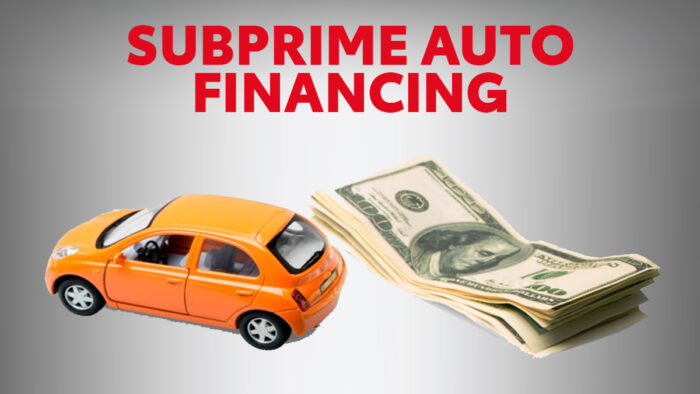A subprime auto loan is a type of financing typically granted to people with low credit scores, but it can also be given to people with no credit. When lenders examine you for a loan, they look closely at your creditworthiness.

Subprime loans have higher interest rates than equivalent prime loans and may also include prepayment penalties if the borrower chooses to return the loan early.
However, because so-called subprime borrowers may have no other option for obtaining an automobile, they are frequently ready to accept the higher fees and interest rates associated with these sorts of loans.
How a Subprime Auto Loan Works
A subprime auto loan works similarly to a standard loan in that a lender agrees to provide you with the funds to purchase a car, and you agree to a monthly payment plan that includes interest and fees.
Because a subprime loan is used by people with low credit scores or no credit history, the interest rates and fees are often higher than usual to protect the lender from risk and loss.
Depending on the lender, you may also be required to provide extra documentation, such as a W-2 or bank statement, throughout the application process. These documents enable them to determine your ability to make payments and uphold your agreement.
Can You Get a Car Loan with a Subprime Credit Score?
If you have a subprime credit score, you can still secure a car loan—but it’ll come at a price. Subprime loans are known for their significantly higher interest rates, making them more expensive compared to loans offered to borrowers with better credit.
Before diving into a loan with a subprime credit score, consider working on improving your credit. A better credit score can unlock more favorable loan terms and lower interest rates, ultimately saving you money.
While it might be tempting to jump into a car purchase right away, prioritizing credit improvement can yield financial benefits and lead to a more manageable loan experience.
How to Get a Subprime Auto Loan
If you need a car but have limited resources and a low credit score, a subprime auto loan can be an option. Follow these steps to secure a loan that fits your needs:
- Check your credit score: Know your credit scores to identify loan options and evaluate your qualifications. Lenders use your credit report to assess risk and calculate interest rates. Obtain your free annual credit report at AnnualCreditReport.com or through your credit card provider.
- Apply for subprime loans: Apply to multiple lenders so you can compare offers, payment amounts, and loan terms. Auto loan inquiries within 14 days count as one inquiry on your credit report. Many lenders allow you to apply for financing online and provide quotes based on your information. Be prepared to provide pay stubs, W-2s, or bank statements to prove your ability to make payments.
- Negotiate the terms: Review and negotiate the loan terms before signing. Discuss any desired changes with a representative and be prepared to compromise if necessary. Negotiate until you reach an agreement that works for both parties.
- Sign the agreement: When satisfied with the loan terms, sign the paperwork to finalize the deal. By signing, you agree to make timely payments and adhere to the contract’s conditions. Meet with a dealer or representative to complete the process and drive away with your vehicle.
Frequently Asked Questions
Is a subprime loan good or bad?
The benefit of subprime mortgages is that they allow borrowers with fair or poor credit to purchase a property when they do not qualify for a prime loan. The main disadvantage of subprime mortgages is that they come with higher interest rates and payments.
How long does a subprime loan last?
This form of loan has a fixed interest rate for the duration of the mortgage, and monthly payments are the same amount. However, unlike traditional mortgages, which normally have a repayment duration of 15 to 30 years, fixed-rate subprime mortgages can extend for 40 to 50 years.
Who uses subprime loans?
Subprime borrowers typically have low credit scores or are viewed as likely to default on a loan.
What are the negative consequences of subprime loans?
Subprime loans are offered to borrowers whose credit scores are lower than those required for regular loans. Traditional lenders frequently reject subprime customers. As a result, subprime loans issued to these customers typically carry higher interest rates than regular mortgages.
What is a subprime credit score for car loans?
A subprime credit score ranges from 600 to 660, and anything below that is termed deep subprime.



